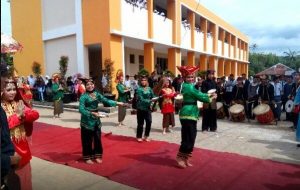Jurusan pesantren insan madani
1. Jurusan Keagamaan:
2. Jurusan Bahasa Arab:
3. Jurusan Bahasa Inggris:
4. Jurusan Ilmu Pengetahuan Alam:
1. Jurusan Keagamaan:

- Fiqih dan Ushul Fiqih: Memahami hukum-hukum Islam dan metodologi hukum Islam.
- Tafsir dan Ulumul Qur’an: Memahami tafsir Al-Qur’an dan ilmu-ilmu terkait.
- Hadits dan Ulumul Hadits: Memahami hadits-hadits Rasulullah dan ilmu-ilmu terkait.
- Aqidah dan Akhlak: Memahami keyakinan dan akhlak Islami.
2. Jurusan Bahasa Arab:

- Bahasa Arab Lanjutan: Mengembangkan kemampuan berbicara, membaca, menulis, dan mendengarkan Bahasa Arab.
- Al-Kitabah: Belajar menulis teks-teks Arab dan karangan ilmiah.
- Bahasa Arab Lanjutan: Mengembangkan kemampuan berbicara, membaca, menulis, dan mendengarkan Bahasa Arab.
- Al-Kitabah: Belajar menulis teks-teks Arab dan karangan ilmiah.
3. Jurusan Bahasa Inggris:

- Bahasa Inggris Lanjutan: Mengembangkan kemampuan berbicara, membaca, menulis, dan mendengarkan Bahasa Inggris.
- English for Specific Purposes (ESP): Kursus Bahasa Inggris yang fokus pada keperluan akademis dan profesional.
- Bahasa Inggris Lanjutan: Mengembangkan kemampuan berbicara, membaca, menulis, dan mendengarkan Bahasa Inggris.
- English for Specific Purposes (ESP): Kursus Bahasa Inggris yang fokus pada keperluan akademis dan profesional.
4. Jurusan Ilmu Pengetahuan Alam:

- Biologi: Memahami prinsip-prinsip ilmu biologi dan eksplorasi alam sekitar.
- Kimia: Memahami prinsip-prinsip ilmu kimia dan eksperimen kimia.
- Fisika: Memahami prinsip-prinsip ilmu fisika dan fenomena alam
- Biologi: Memahami prinsip-prinsip ilmu biologi dan eksplorasi alam sekitar.
- Kimia: Memahami prinsip-prinsip ilmu kimia dan eksperimen kimia.
- Fisika: Memahami prinsip-prinsip ilmu fisika dan fenomena alam
Prestasi Siswa:
Juli 24, 2024
Uncategorized
rolex replica watches
ReplicaClone.is is an online store that creates and sells quality rolex replica watches at reasonable and affordable prices.
Juli 24, 2024
Uncategorized
Hublot replica watches
Looking for high quality replica watches? Check out www.thecomedypub.co.uk. Experience the stylish design and craftsmanship of Hublot replica watches at a fraction of […]
Juli 24, 2024
Uncategorized
Order Replica watches UK
Rolexreplicauk.me offers exquisite replica Siwss made rolex watches that are meticulously crafted with great attention to detail. Order Replica watches UK at http://www.gwyneddsands.co.uk/aboutus.htm. […]

